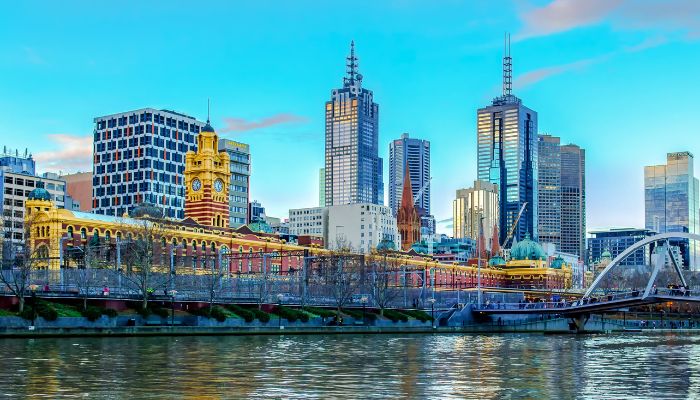
A critical housing undersupply has been brewing in Victoria over the past two years and this is likely to dictate the direction of the state’s housing market as it enters 2023.
Investors who are planning to enter the markets of Victoria and Melbourne must study the supply-demand dynamics to know which suburbs are worth investing in 2023.
OpenCorp CEO Matt Lewison said the greatest activity and relative price increases are likely to occur where rents are rising fastest — this coincides with the areas that are most undersupplied.
“It is important to remember that investors are not just seeking capital growth — we also want a property that does not cost an arm and a leg to hold onto,” he told Your Investment Property.
“With our major lender’s laser focus on interest serviceability or the borrowers’ ability to pay interest on their debts, property cashflow is more critical than ever to those wanting to build an investment portfolio.”
Mr Lewison said investors should ideally be seeking a 5% gross rental yield — the old rule of thumb applies, which states that when the variable rate is around 5%, a property worth $600,000 needs to generate $600 per week rent to exceed a 5% yield.
“Melbourne currently has Australia’s cheapest rental market so finding properties that generate a 5% yield is like trying to find a needle in a haystack,” he said.
“However, Melbourne’s rents are fast catching up to other markets and with rents rising at an annual rate of 22%, a 4.2% yield today will potentially be a 5% yield in a year’s time.”
Melbourne suburbs to consider in 2023
Mr Lewison said Melbourne’s south-eastern and outer-eastern suburbs are the most undersupplied housing markets, with many of them recording a vacancy rate in the line of 1% across houses and units.
“Not surprisingly, these markets have produced most of Melbourne’s best-performing suburbs over the last 12 months – many have even defied the doom and gloom to continue posting positive growth,” he said.
Below are Mr Lewison’s suburb picks for Melbourne in 2023 across various submarkets that demonstrate low vacancy rates, rapidly rising rents, and favourable affordability:
|
Suburb |
Vacancy Rate |
Median Price |
Weekly Asking Rent |
Average Gross Rental Yield |
12 Month Rent Growth |
|
(West) – Tarneit |
1.40% |
$645,000 |
$422 |
3.4% |
11% |
|
(North) Wollert |
1.00% |
$700,000 |
$473 |
3.5% |
13.6% |
|
(East) Box Hill - Units |
1.30% |
$536,250 |
$481 |
4.7% |
32.2% |
|
(South-East) Clyde |
1.20% |
$698,950 |
$499 |
3.7% |
12.8% |
|
(Inner) Flemington - Units |
1.30% |
$429,999 |
$431 |
5.2% |
19.2% |
|
(North-West) Sunbury |
0.90% |
$680,000 |
$450 |
3.4% |
15.3% |
Outlook for Victoria and Melbourne in 2023
Mr Lewison said the undersupply in Melbourne is something to consider when looking at how the market is likely to perform over the next year.
While auction clearance rates and median house prices give a glimpse into where the market is going, Mr Lewison said they are “lagging indicators”, which do not necessarily tell where prices will be in the future.
“To understand how the market is likely to perform in the future, it is important to identify the leading indicators that provide a strong indication of underlying forces that will impact prices moving forward: supply, demand, and affordability,” he told Your Investment Property.
Looking at the Melbourne market through the lenses of supply, demand, and affordability reveals an emerging trend.
Mr Lewison said the rental vacancy rate is a good indicator of the supply-demand situation.
Citing figures from SQM Research, he said that prior to COVID-19, Melbourne had a vacancy rate of 2.1% with approximately 11,000 rental properties available for lease.
At the peak of lockdowns in 2020, Melbourne had a rental vacancy rate of 5.5% with around 28,000 vacant rental properties.
“Today, the vacancy rate stands at just 1.5% with only 8,058 properties available to rent — usually, a vacancy rate of less than 3.0% is considered an undersupplied housing market. Melbourne is now a critically undersupplied market,” Mr Lewison said.
This reduction in the available properties has resulted in asking rents for houses and units growing by 22.8% over the past year alone.
“Sadly, for those renters in the market, the situation is going to get worse in the coming months as the undersupply is exacerbated by increasing demand,” Mr Lewison said.
Things are likely to be exacerbated with the 6.9% growth projection in Victoria’s population between 2022 and 2026 — this will make the state the fastest-growing state over the next three years as it welcomes around 450,000 more people.
Meanwhile, the reopening of international borders would mean a surge in student and skilled migrants, which would only worsen the housing situation.
“The impact of this additional demand is not uniform across all of Melbourne – people moving to a new country are not likely to move straight into the premium market,” Mr Lewison said.
“Students will fill the high-density apartments, pushing up rents around universities, whereas new families coming into Australia will seek affordably priced houses where there is strong amenity and good links to their employment.”
“This is likely to increase competition for rentals in the outer ring suburbs, driving up rents at an even faster pace.”
Your Investment Property’s Suburbs to Watch 2023 series:
- Melbourne suburbs investors should watch out for in 2023
- NSW investment hotspots for 2023
- Top Adelaide suburb picks for property investors in 2023
- Perth hotspots for investment in 2023
- Queensland and Brisbane hotspots for investment in 2023
- Canberra hotspots for investment in 2023
- Tasmania hotspots for investment in 2023
-
Photo by torcasjohn from Pixabay.
